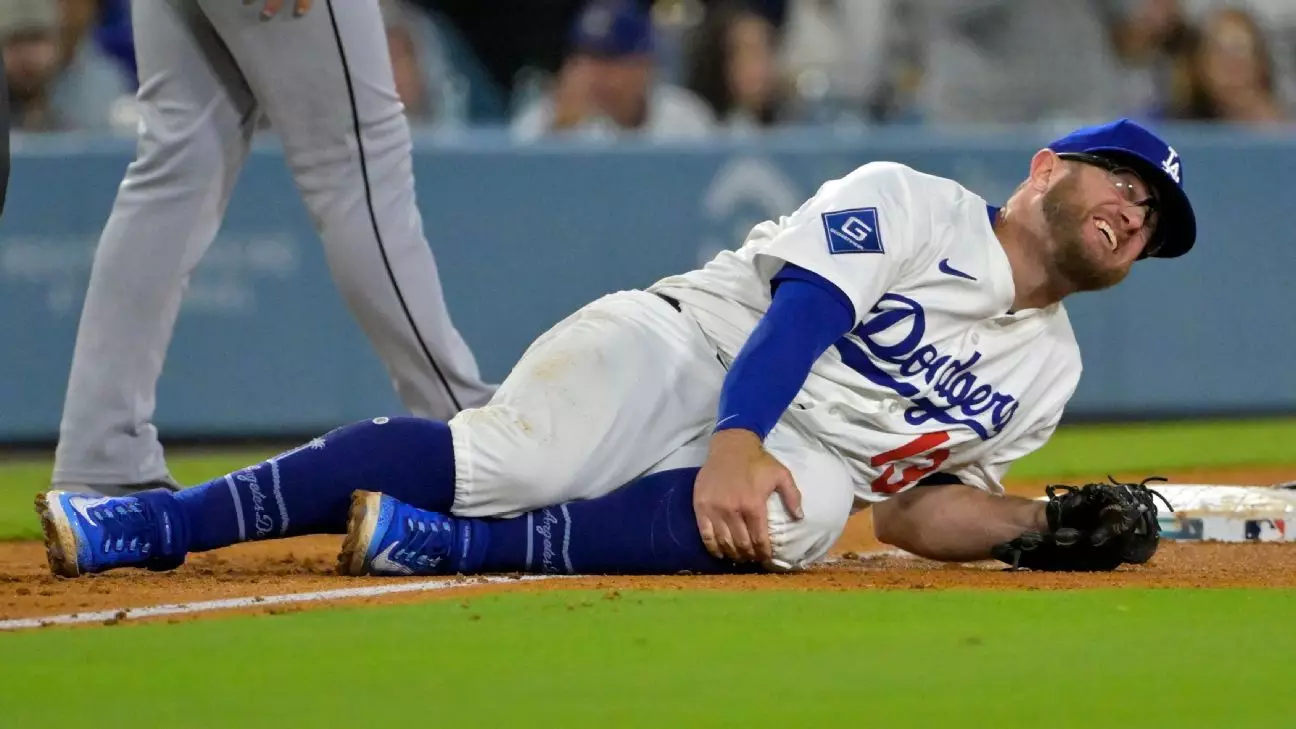In the world of professional sports, injuries are an inevitable shadow that looms over even the most talented athletes. They serve as stark reminders of the physical toll the game demands and often test the mental resilience of those involved. Max Muncy’s recent injury ordeal with the Los Angeles Dodgers exemplifies this delicate balance between vulnerability and hope. While the MRI results provided a welcome relief—confirming no severe structural damage—the news that he will be sidelined for approximately six weeks cannot be dismissed lightly. It raises an important point: optimism must be tempered with realism, especially in high-stakes sports. Muncy’s reaction, a mix of relief and frustration, underscores the human aspect of athletic careers. His emotional rollercoaster—relieved by the absence of torn ligaments but disappointed by the extended recovery period—reflects the complex psychology athletes grapple with during injuries.
In essence, this episode highlights how injuries, despite their physical toll, also serve as catalysts for mental strength. Athletes like Muncy often emerge from setbacks with a renewed perspective, recognizing that resilience can be forged through adversity. The importance of hope, tempered with cautious optimism, becomes a vital component of recovery not just physically but psychologically.
The Fragile Ledger of Momentum and Morale
Beyond the individual toll, injuries ripple through team dynamics and morale. The Dodgers, a team renowned for their competitive edge, faced a moment of vulnerability with Muncy’s absence. His stepping in at third base is not simply a matter of replacing a player but maintaining the rhythm and confidence that fuel a team’s success. The decision to temporarily insert utility players like Enrique Hernandez and Tommy Edman signals a team’s strategic adaptability but also underscores the fragile nature of momentum in baseball. An injury to a key player can disrupt the flow, forcing others to step outside comfort zones and potentially affecting performance.
There’s also a psychological aspect at play. Muncy’s candidness about his feelings—his frustration at missing Clayton Kershaw’s historic strikeout—exposes the depth of his commitment and emotional investment in the game. That heartbreak reveals how high the stakes are for players whose careers and identities are intricately tied to their on-field achievements. It is these raw, honest moments that capture the essence of sports: a brutal balance of triumphs and tribulations, fleeting moments that define legacies.
Unlocking Potential Amidst Adversity
The deployment of players like Esteury Ruiz during Muncy’s recovery period demonstrates how teams leverage depth to weather storms. Ruiz, acquired in a mid-season trade and already making an impact at Triple-A, embodies the potential that can emerge amid adversity. His addition signifies more than just filling a roster spot; it embodies the broader theme of hope and opportunity that sports consistently champion. Injuries open doors for emerging talents, and for players like Ruiz, this moment could serve as a pivotal point in their careers.
Furthermore, Muncy’s situation invites reflection on how setbacks can catalyze growth. While six weeks away from the game is undeniably tough, it offers a period of rest, reflection, and adjustment—a chance for players to return stronger. This perspective champions the idea that adversity, while painful, is also an incubator for resilience, innovation, and renewed focus. Often, within these challenging moments lie the seeds of future success, provided athletes and teams maintain their unwavering belief in future possibilities.
The Broader Perspective: Embracing Uncertainty with Determination
What stands out most about this incident is the broader narrative it contributes to within professional sports. Injuries test the resolve of teams and players alike, demanding patience, strategic ingenuity, and mental toughness. The Dodgers’ proactive approach—replacing Muncy with capable players and holding hope for his swift recovery—illustrates a resilient mindset rooted in perseverance.
In the end, the story of Max Muncy’s injury isn’t just about a torn ligament or whether a player can return to form in six weeks—a timeline that, for an athlete, can feel like an eternity amid the thrill of competition. It’s a testament to the relentless spirit of sports; a reminder that setbacks are inevitable but not insurmountable. With proper recovery, mental fortitude, and an unwavering focus on future goals, athletes can turn moments of pain into catalysts for growth, proving that resilience is the true hallmark of sports excellence.


Leave a Reply